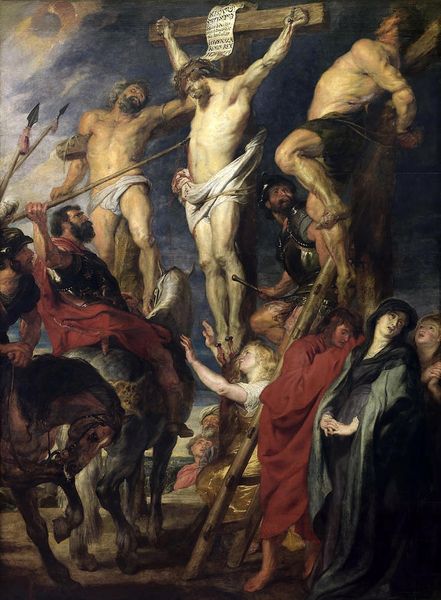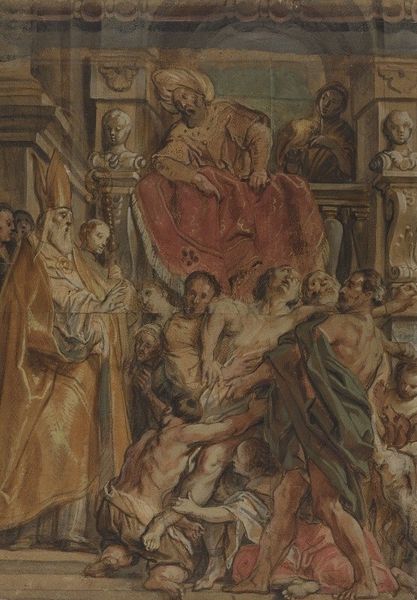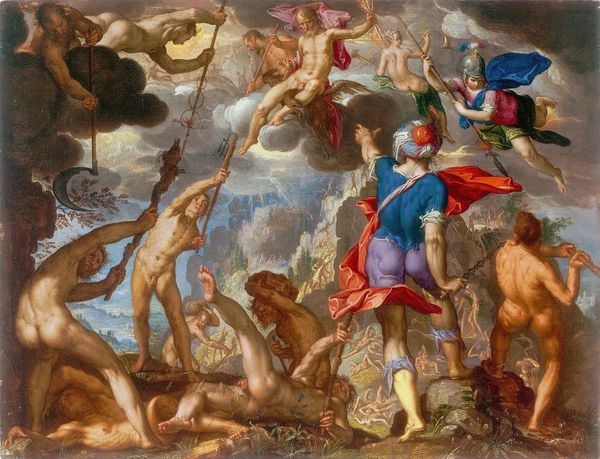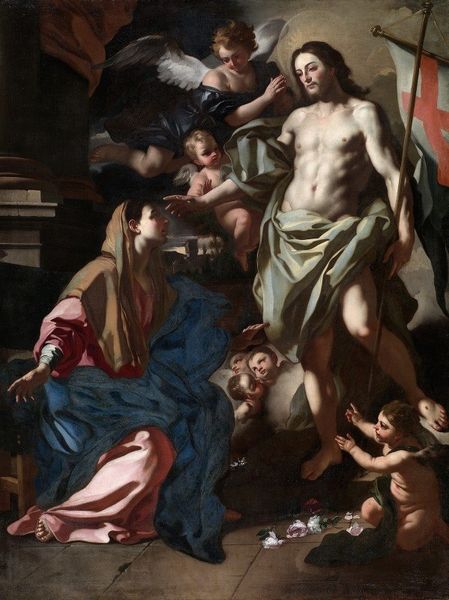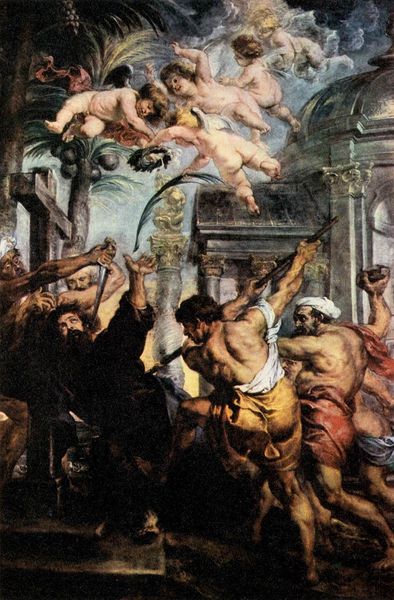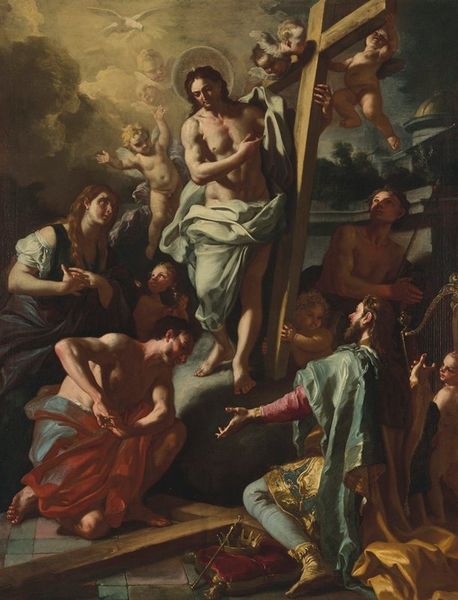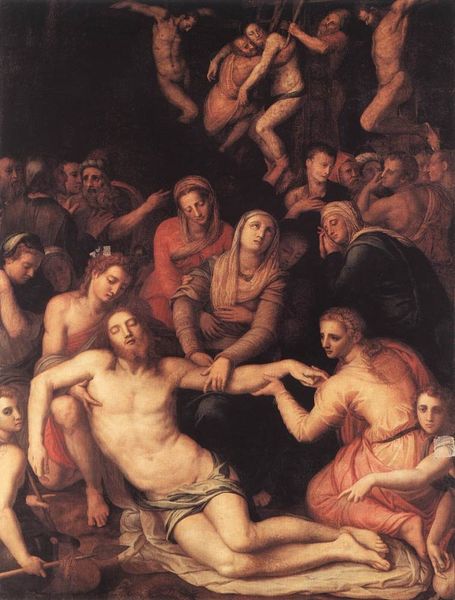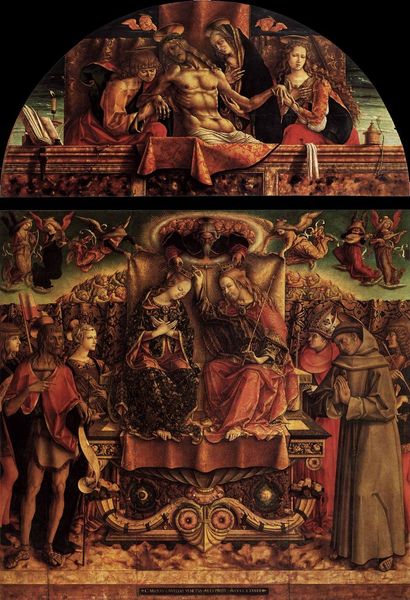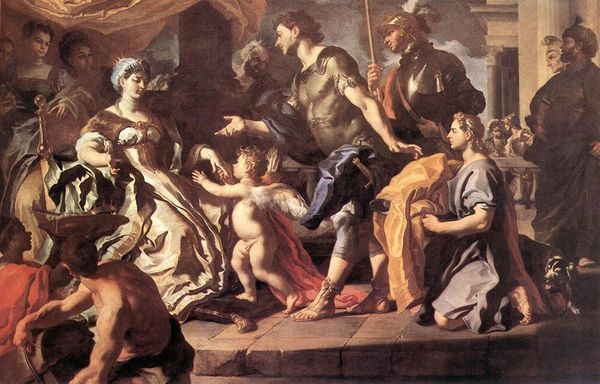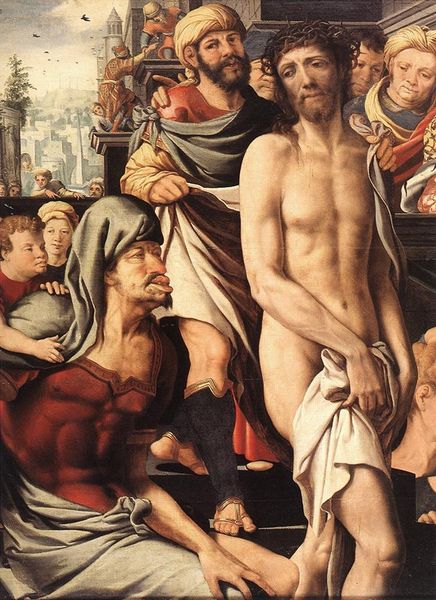
oil-paint
#
allegory
#
baroque
#
oil-paint
#
figuration
#
oil painting
#
roman-mythology
#
mythology
#
history-painting
#
nude
Dimensions: 20.2 x 15.5 cm
Copyright: Public domain
Editor: Here we have "Mars and Venus Discovered by the Gods," an oil painting from 1604 by Joachim Wtewael. My first thought is just how dynamic the composition feels, with so many figures in motion. How do you read this painting from a formalist perspective? Curator: It's indeed a highly energetic piece. Notice the dynamism achieved through the use of diagonal lines. Wtewael creates tension and movement using a strong contrast between the turbulent scene above and the more intimate tableau on the bed. How does this compositional contrast affect your reading? Editor: I see what you mean. There’s a definite separation of planes that leads your eye, contrasting with the implied circular motion above with the gods. It creates an almost voyeuristic experience. The texture on the figure's skin looks striking as well. Curator: Precisely. Wtewael manipulates light and shadow to model the figures' musculature, thus directing your gaze. Semiotically, what do you make of the details like the armor on the floor juxtaposed with the nude figures in the bed? Editor: The armor at the bottom juxtaposes the themes of war and love, maybe implying Mars' neglect of his duties due to his affair. What can you tell from the materials and methods used? Curator: The oil paint, applied with evident care, allows for the creation of minute details. But Wtewael transcends mere representation, instead using these materials to highlight thematic contrasts and heighten emotional impact. Editor: The mastery is indeed undeniable. I see now how formal qualities reveal a lot about the narrative. Curator: Yes, by attending to these elements, we grasp Wtewael's message in its full complexity. Every element is deliberate, serving the grander symbolic purpose.
Comments
No comments
Be the first to comment and join the conversation on the ultimate creative platform.
